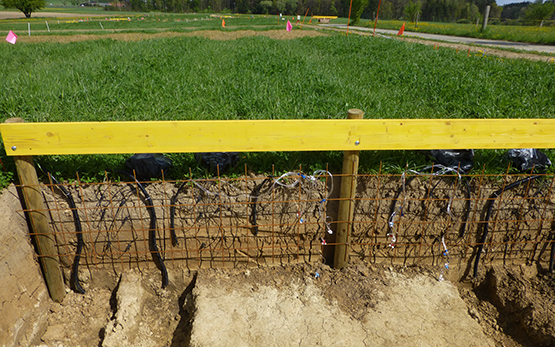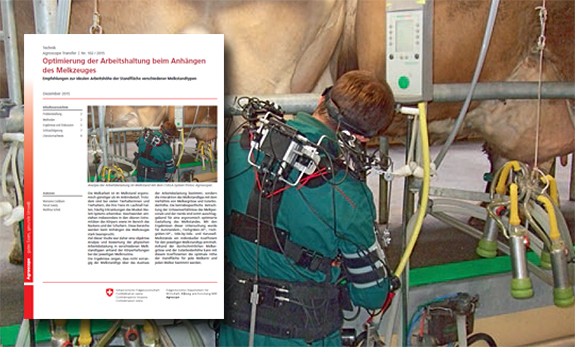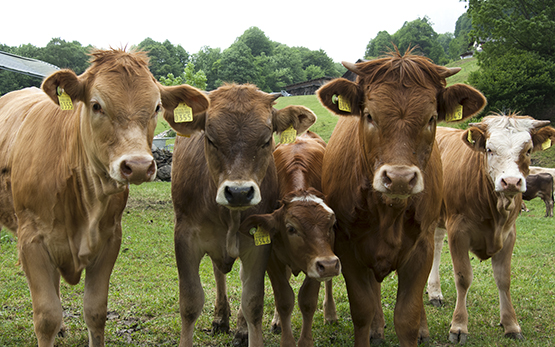Schneider M., Umstatter C., Nasser H.-R., Gallmann E., Barth K.
Effect of the daily duration of calf contact on the dam's ultra- and circadian activity rhythms.
JDS Communications, In Press, 2024, 1-5.
Schneider M., Umstätter C., Nasser H. R., Gallmann E., Barth K.
Vorläufige Ergebnisse zum Einfluss der muttergebundenen Kälberaufzucht auf die ultra- und circadiane Aktivitätsrhythmik von Milchkühen.
In: One step ahead - einen Schritt voraus. 7. März - 10. März, Hrsg. FiBL, Frick (CH). 2023, 454-455.
Schneider M., Umstätter C., Nasser H. R., Gallmann E., Barth K.
Erste Untersuchungen zum Einfluss der muttergebundenen Kälberaufzucht auf die ultra- und circadiane Aktivitätsrhythmik von Milchkühen.
In: 16. Wissenchaftstagung Ökologischer Landbau. 8. März, Hrsg. FiBL, Frick (CH). 2023.
Fuchs P., Stachowicz J., Schneider M. K., Probo M., Bruckmaier R., Umstätter C.
Learning behavior and milk cortisol levels of dairy cows managed under a rotational grazing system with virtual fencing.
In: Abstract Booklet. 13.10, Hrsg. Agroscope, Changins. 2022, 19.
Fuchs P., Stachowicz J. , Schneider M. K., Probo M., Bruckmaier R., Umstätter C.
Learning behavior and milk cortisol levels of dairy cows managed under a rotational grazing system with virtual fencing.
In: 3rd Agroscope PhD-PostDoc Symposium. 13. Oktober, Hrsg. Agroscope, Changins. 2022.
Nasser H. R., Schneider M., Stachowicz J., Umstätter C.
digiRhythm: Analyzing Animal's Rhythmicity.
Stachowicz J., Nasser H. R., Adrion F., Umstätter C.
Can we detect patterns in behavioral time series of cows using cluster analysis?
Journal of Dairy Science, 105, (12), 2022, 1-11.
Fuchs P., Stachowicz J., Schneider M. K., Probo M., Bruckmaier R., Umstätter C.
Learning behaviour and welfare of dairy cows using a virtual fencing system in rotational grazing.
In: 73rd Annual Meeting of the European Federation of Animal Science. 5 - 9 September, Hrsg. EAAP, Porto. 2022.
Fuchs P., Stachowicz J., Schneider M. K., Probo M., Bruckmaier R., Umstätter C.
Learning behavior and welfare of dairy cows using a virtual fencing system in rotational grazing.
In: 73º Annual Meeting of European Federation of Animal Science. 5. - 9. September, Hrsg. EAAP, Porto, Portugal. 2022, 1-13.
Bach L.
Wie werden Schweizer Kühe trockengestellt?
UFA-Revue, 3. Februar, 2022, 1-4.
Fuchs P., Adrion F., Shafiullah A.Z.M., Bruckmaier R., Umstätter C.
Detecting ultra- and circadian activity rhythms of dairy cows in automatic milking systems using the degree of functional coupling: A pilot study.
Frontiers in Animal Science, 3, 2022, 1-15.








